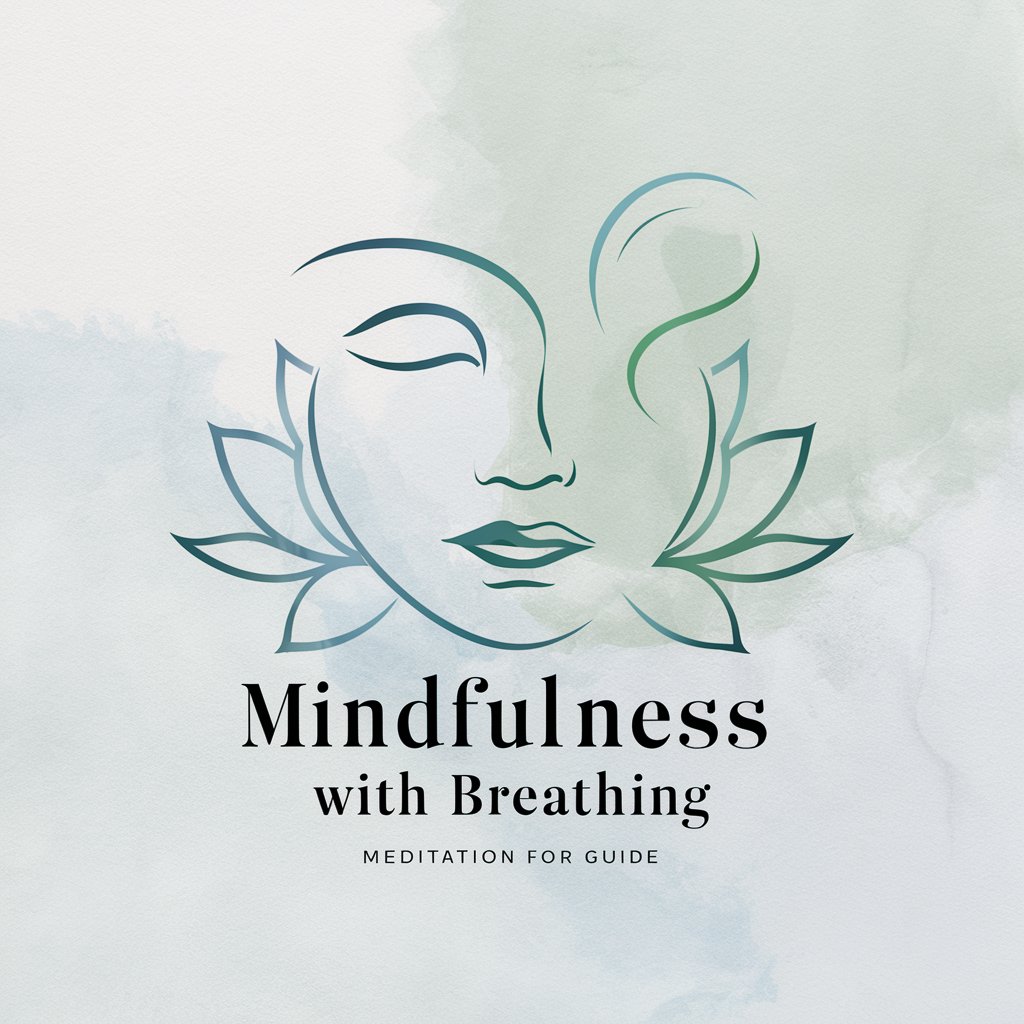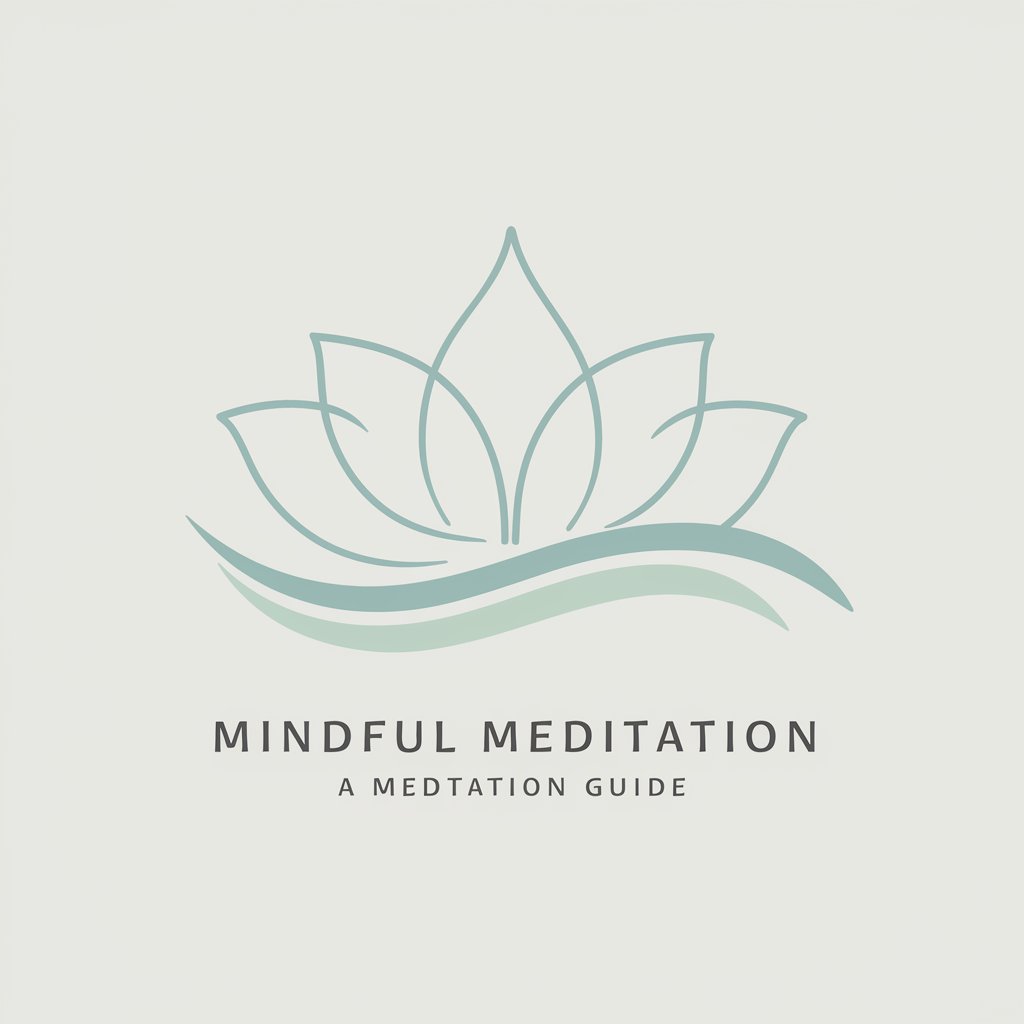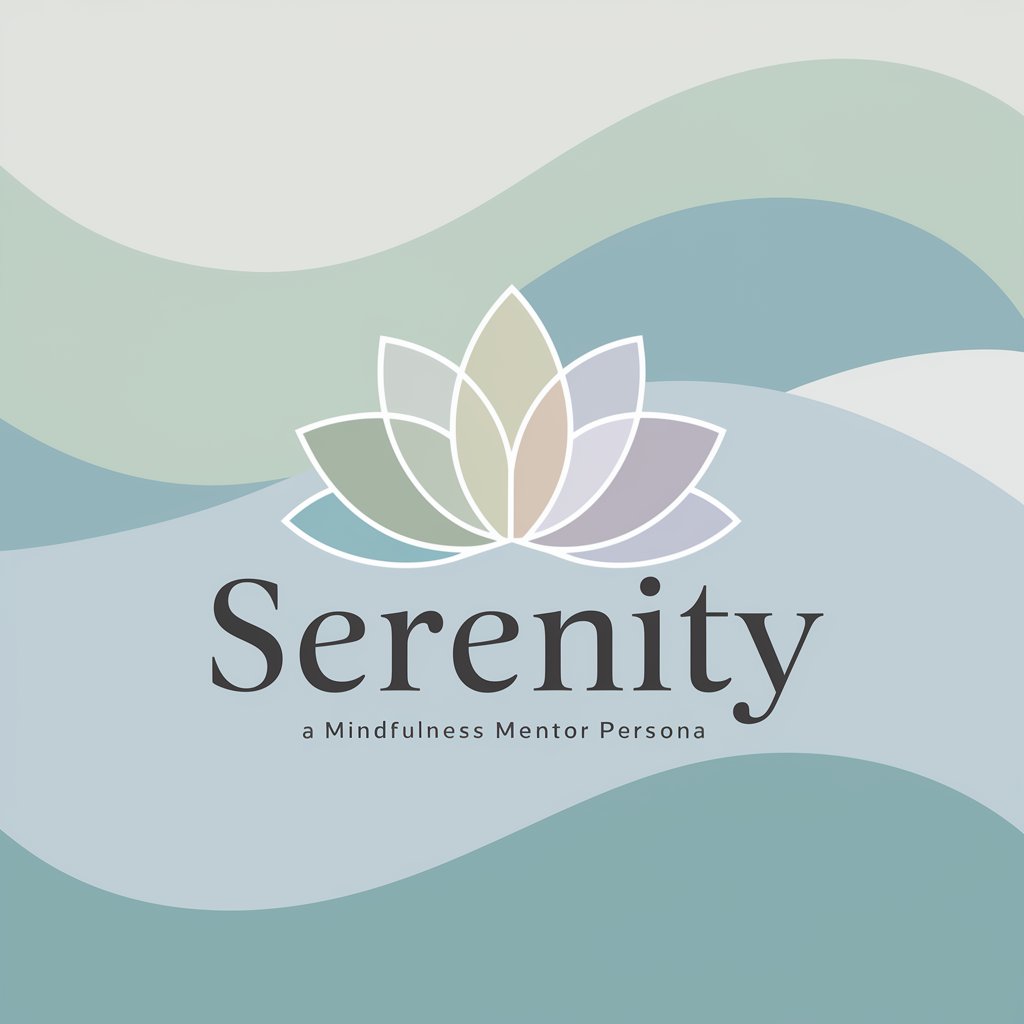
Mindfulness with Breathing - Mindfulness Breathing Guide

Welcome! Let's explore mindfulness together.
Breathe deeply, live fully with AI guidance
Begin your meditation practice by...
To develop mindfulness with breathing, start by...
A simple way to focus on your breath is to...
For beginners in mindfulness meditation, it helps to...
Get Embed Code
Introduction to Mindfulness with Breathing
Mindfulness with Breathing, derived from the teachings of Buddhadasa Bhikkhu, is a meditation practice focusing on the awareness of breath as a means to cultivate mindfulness and achieve mental clarity. This practice is rooted in the Buddhist tradition but is designed for universal applicability, transcending cultural and religious boundaries. It involves observing the breath's natural flow without attempting to control it, which helps in grounding the practitioner in the present moment, leading to a deeper understanding of the mind and body connection. An example of its application is during moments of stress or anxiety, where focusing on the breath can bring immediate calm and recenter the mind, illustrating the practice's utility in managing everyday life's challenges. Powered by ChatGPT-4o。

Main Functions of Mindfulness with Breathing
Cultivating Present Moment Awareness
Example
A person feeling overwhelmed by future anxieties or past regrets can use mindfulness with breathing to return their focus to the present, thereby reducing stress.
Scenario
During a high-pressure work meeting, focusing on the breath helps maintain composure and attentiveness.
Enhancing Emotional Regulation
Example
By observing the breath and the sensations associated with it, individuals can learn to observe their emotional responses without immediate reaction, fostering emotional resilience.
Scenario
When faced with a confrontational situation, taking a moment to focus on breathing can prevent reactive anger and encourage a more measured response.
Developing Concentration and Mental Clarity
Example
Regular practice sharpens the ability to focus, clear the mind of distractions, and improve cognitive functions.
Scenario
A student uses mindfulness with breathing techniques before studying to enhance concentration and retention of information.
Ideal Users of Mindfulness with Breathing Services
Individuals Seeking Stress Reduction
People experiencing high levels of stress in personal or professional life can find relief through the practice, as it aids in managing and mitigating stress responses.
Meditation Practitioners and Enthusiasts
Those interested in meditation and mindfulness practices, ranging from beginners to advanced practitioners, can deepen their practice and understanding of mindfulness through focused breathing techniques.
Health and Wellness Advocates
Individuals focused on holistic well-being, incorporating mental, physical, and emotional health, can use mindfulness with breathing as a tool to maintain and enhance overall wellness.

How to Use Mindfulness with Breathing
Step 1
Visit yeschat.ai for a free trial without needing to log in, also no requirement for ChatGPT Plus.
Step 2
Choose a quiet and comfortable place to sit or lie down, minimizing external distractions to focus on your breath.
Step 3
Close your eyes gently and start observing the natural rhythm of your breath, noticing how it flows in and out.
Step 4
When your mind wanders, acknowledge the distraction and gently redirect your focus back to your breath without judgment.
Step 5
Conclude your session by gradually widening your attention beyond your breath to the surrounding environment, then gently opening your eyes.
Try other advanced and practical GPTs
CleanApp
Empowering Cleaner Communities with AI

Travel Planner GPT
Empower your travel with AI

Git Butler
Elevate Your Git Workflow with AI

🔮 Digital Escape Room Creator 💡
Empower Learning Through AI-Driven Puzzles

JokeGPT
Crafting Laughter with AI

App Store Guideline
Navigate App Store rules with AI-powered insights

ワークショップの問いの作り方指南
Enhancing Workshop Engagement with AI

Descriptor
Crafting Stories for Every Video, Powered by AI

Title Dog
Craft Captivating Titles with AI

Web Dash
Transforming Text into URL-Ready Strings with AI

Spark
Empowering creativity with AI

Haterade
Diffuse negativity with AI-powered precision

Q&A about Mindfulness with Breathing
What is the best time of day to practice Mindfulness with Breathing?
The optimal time is subjective and varies per individual; however, practicing in the morning can set a positive tone for the day, while evening sessions may help in unwinding before sleep.
How long should a Mindfulness with Breathing session last?
Start with short sessions of 5-10 minutes and gradually increase the duration as you become more comfortable with the practice, aiming for 20-30 minutes or longer.
Can Mindfulness with Breathing help with stress?
Yes, it can significantly reduce stress by fostering a state of relaxation and present-moment awareness, thus interrupting habitual stress response patterns.
Is it normal for my mind to wander during Mindfulness with Breathing?
Absolutely normal. The practice involves noticing when the mind has wandered and gently bringing your focus back to your breath without self-criticism.
Can Mindfulness with Breathing improve physical health?
Yes, consistent practice can lead to lower blood pressure, reduced chronic pain, improved sleep, and other positive health outcomes by reducing stress and enhancing overall well-being.





